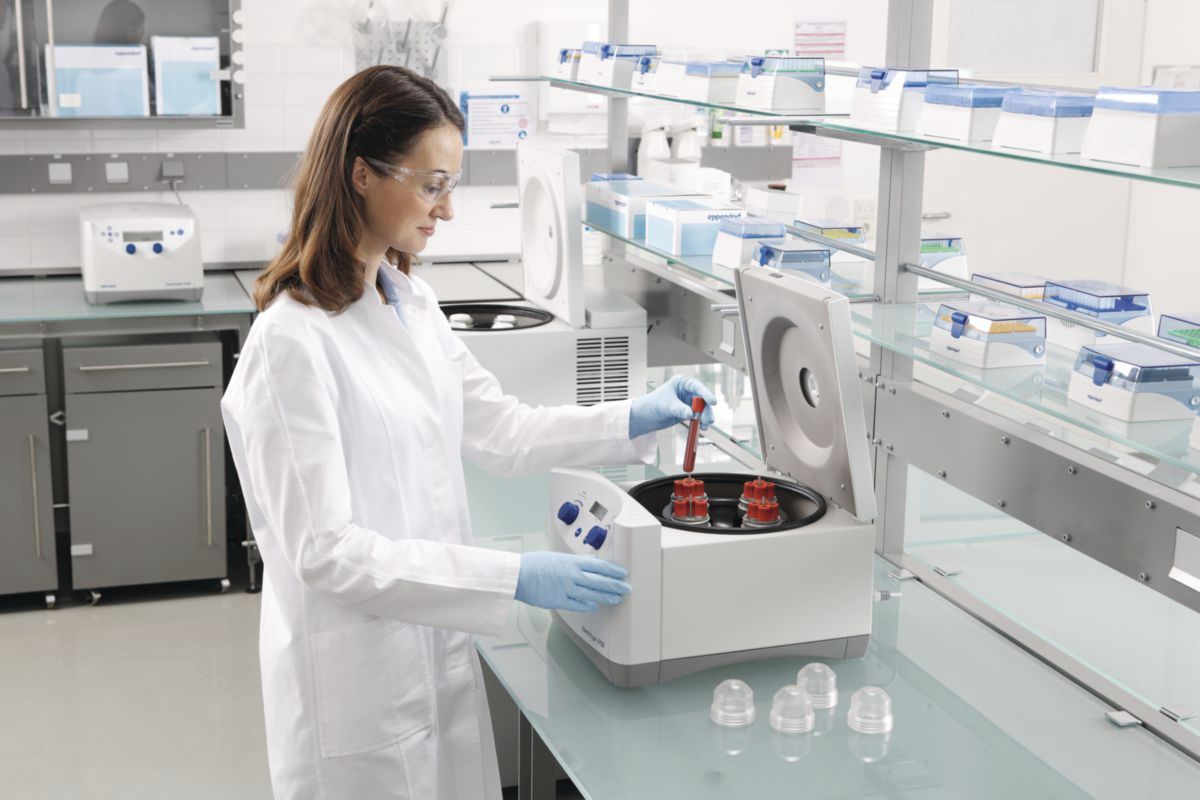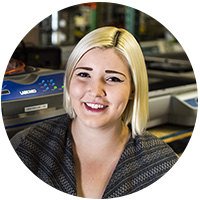
As one of the most commonly used laboratory instruments today, the centrifuge offers an efficient means of preparing and separating samples of different densities often for scientific and medical use. This form of density-driven preparation has been around for centuries, dating as early as the 1400s with simple hand-powered milk separators, however a formal commercialized version of the centrifuge did not emerge until the 1800s.
In 1864, Antonin Prandtl invented the first centrifuge-type machine, which was used in the dairy industry to separate milk and cream on a large scale. Following Prandtl, Friedrich Miescher, a Swiss physician and biologist, was the first to apply centrifugation in the lab. From a crude centrifuge system he developed in 1869, Miescher was able to successfully isolate nucleic acids from the nuclei of white blood cells, which served as an important development in the discovery of DNA inheritance.
Miescher’s work quickly attracted attention in the field, leading to the swift development of the first continuous centrifugal separator in 1879 by Gustaf de Laval, originally introduced as an impulse steam turbine. De Laval’s concepts allowed for the ultimate commercialization of the centrifuge and have been used to develop modern rocket engines and dairy industrial equipment.
The next evolution of the centrifuge occurred in the 1920s with the development of the ultracentrifuge by Swedish chemist Theodor Svedberg. This new ultracentrifuge could reach 900,000 g, while other routine models at the time were only capable of reaching 260,000 g. This enabled Svedberg to determine the molecular weight and subunit structure of highly complex proteins and viruses, which revolutionized the study of protein structures. Svedberg received the Nobel Prize in chemistry in 1926 for his invention of the ultracentrifuge.
While Svedberg’s design allowed much advancement, his ultracentrifuge functioned strictly as an analytical instrument, ultimately preventing its use as a preparative device due to its horizontal rotor axis. The research of French physicist Emile Henriot, however, enabled this transition. Henriot’s independent work consisted of using compressed air to generate high velocities, translating to high rotational speeds for centrifugation.
By the early 1930s, biologist Martin Behrens was using the centrifuge to isolate cell structures. Alongside Behrens’ work was that by biologists Robert Bensley and Normand Hoerr, who could reliably produce a mitochondrial fraction by 1934. With the work of these three scientists, the technique of true cell fractionation via the centrifuge could be achieved and later refined.
Meanwhile, Jesse Beams of the University of Virginia started developing a centrifuge for isotopic separation in 1934, including vacuum design. Beams’ graduate student Edward Pickels continued refining this vacuum centrifuge to create the first high-speed model in 1938 with Johannes Bauer in an attempt to isolate and filter viruses.
Pickels also went on to create the first electrically-driven vacuum centrifuge in 1942, after which Pickels cofounded Spinco, where he marketed a truly preparative device capable of reaching speeds up to 40,000 rotations per minute in 1949. Throughout the beginning of this time, Beams worked on the Manhattan Project to isolate uranium isotope U-235 through the use of a gas centrifuge, but his design was deemed inadequate to produce enough highly enriched uranium for the timeline of the atomic bomb project.
With growing international focus on uranium production, the Russian nuclear weapons program set prisoner of war Austrian physicist Gernot Zippe on the centrifuge task. By the early 1950s, Zippe, with the help of fellow Austrian POW Max Steenbeck, had streamlined Beams’ design for stable and reliable production. Amazingly, Zippe and his colleagues were paid and released from the USSR in 1956 to commercialize the centrifuge.
In the United States, 1954 brought vast improvements to the commercial centrifuge when Beckman Instruments (now Beckman Coulter) bought out Spinco, creating instruments with new high speed motors and better rotors. Meanwhile, Myron Brakke, a plant virologist working at the Brooklyn Botanical Garden, developed density gradient centrifugation, which provided more reproducible results for tissue fractionation than previous methods.
Zippe made his way to the University of Virginia in 1958 to show how to make efficient gas centrifuges. The US made this gas centrifuge research classified in 1960; all the while, scientists in Europe could continue freely pursuing it. Zippe went on to help start Urenco, which uses gas centrifuges to process uranium for nuclear power.
In 1962, the German company Netheler & Hinz Medizintechnik (now known as Eppendorf) created the first microcentrifuge for lab use. This microliter system was subsequently developed by various other labware and biotech companies, ultimately giving birth to the centrifuge’s prevalence within lab environments today.
The first microprocessor-controlled centrifuge was introduced in 1976, innovation that was years ahead of its time, at ACHEMA by Hettich. Then Beckman launched floor ultracentrifuges in the 1980s, and Eppendorf launched personal centrifuges in 2000. And centrifuge technology has continued to improve commercially ever since, now used for density separation (as originally developed), isotope separation, aeronautics and astronautics, and geotechnical simulations. With prominent medical and biotech use, especially concerning protein and nucleic matter research, the centrifuge will no doubt continue to evolve and prove essential within the lab.
References
Bechtel, W. (2006). Discovering Cell Mechanisms: The Creation of Modern Cell Biology. New York, NY: Cambridge University Press.
Broad, W. (2004, March 23). Slender and Elegant, It Fuels the Bomb. The New York Times. Retrieved February 16, 2017, from http://www.nytimes.com/2004/03/23/science/slender...
Buie, J. (2010, May 7). Evolution of the Lab Centrifuge. Retrieved February 16, 2017, from http://www.labmanager.com/lab-product/2010/05/evo...
Kestenbaum, D. (Writer). (2005, September 21). A History of the Centrifuge [Transcript, Television series episode]. In Morning Edition. NPR. Retrieved February 16, 2017, from http://www.npr.org/templates/story/story.php?stor...
New World Encyclopedia. (2017, January 24). Centrifuge. Retrieved February 16, 2017, from http://www.newworldencyclopedia.org/entry/Centrif...
Wellerstein, A. (2012, May 28). Zippe's Centrifuges. Retrieved February 16, 2017, from http://blog.nuclearsecrecy.com/2012/05/28/zippes-...



